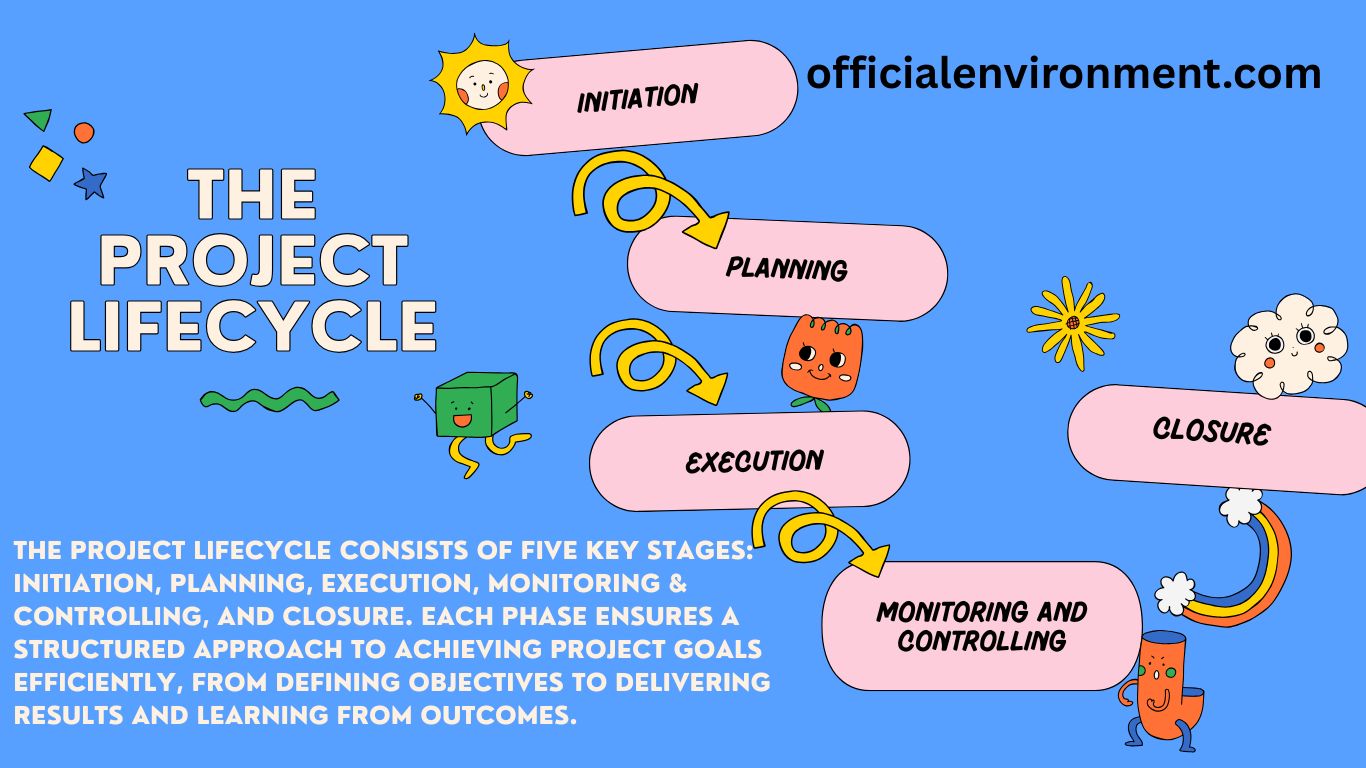Project management is the backbone of any successful initiative, whether it’s launching a new product, organizing an event, or implementing a company-wide strategy. It’s the art of balancing resources, timelines, and goals to deliver results efficiently. But what does it take to excel in project management? Let’s explore the key concepts, tools, and strategies that can help you find the complexities of managing projects effectively.
What is a Project?
A project is a temporary attempt with a defined beginning and end, aimed at creating a unique product, service, or result. Unlike routine operations, projects are temporary and unique. For example, organizing a wedding is a project—it has a specific goal (the wedding day), a timeline, and a budget. On the other hand, daily operations like running a restaurant are ongoing and repetitive.
Key Characteristics of a Project:
- Temporal/Time Limitation: Every project has a beginning and an ending date.
- Uniqueness: Despite their similarities, every project is unique.
- Clearly Defined Goal: Projects aim to achieve specific goals. That means projects are meant to accomplish particular objects.
- Adequate Complexity: Projects often involve multiple tasks and stakeholders.
- Limited Resources: Projects operate within constraints like time, budget, and resources. Meaning time, money, and resources are some of the limitations that projects must work within.
The Project Lifecycle: From Initiation to Closure
The term "project lifecycle" refers to the sequence of stages that every project goes through. These stages guarantee that the project is properly organized, carried out, and managed. Let's dissect them:
1. Initiation
During this stage, the project's goals, objectives, and scope are defined. The project charter, which lists the objectives, stakeholders, and limitations of the project, is one of the main deliverables. The project charter might say, for instance, "Reduce warranty returns from 2.6% to 1.3% within six months" if a business want to lower product warranty returns.
2. Planning
Planning is the most critical phase. It involves creating a Work Breakdown Structure (WBS), which breaks the project into smaller, manageable tasks. For instance, if the project is to build a house, the WBS might include tasks like “prepare the site,” “do masonry work,” and “install plumbing.”
- Time Scheduling: Define milestones and deadlines.
- Resource Planning: Allocate resources like team members, budget, and materials.
- Risk Management: Identify potential risks and create contingency plans.

3. Execution
This is where the actual work happens. The project team carries out the tasks outlined in the WBS. Effective communication and collaboration are crucial during this phase. For example, if the project is to launch a new software product, the development team would code the software, while the marketing team prepares the launch campaign.
4. Monitoring and Controlling
Progress must be monitored throughout the project in relation to the plan. Success is gauged by Key Performance Indicators (KPIs) such as deadline compliance, budget adherence, and quality standards. Corrective measures, such as reallocating resources or modifying timelines, might be required if the project is running behind schedule.
5. Closure
The project is officially closed after its goals have been achieved. Delivering the finished product, carrying out a post-project evaluation, and recording lessons gained are all included in this. For instance, following the conclusion of a marketing campaign, the group may assess its results and pinpoint areas in need of development.
Key Tools and Techniques in Project Management
1. Work Breakdown Structure (WBS)
The WBS is a hierarchical decomposition of the project into smaller tasks. It helps in:
- Assigning responsibilities.
- Estimating time and costs.
- Tracking progress.
Example: If you’re planning a birthday party, the WBS might include tasks like “book a venue,” “send invitations,” and “order food.”
2. Gantt Charts
Gantt charts visually represent the project schedule, showing task durations and dependencies. They are useful for tracking progress and ensuring that tasks are completed on time.
3. Agile and Scrum
Agile is a flexible approach that emphasizes iterative progress and collaboration. Scrum, a popular Agile framework, involves working in short cycles called sprints. For example, a software development team might use Scrum to release new features every two weeks.
4. Risk Management
Risk identification and mitigation are essential to the success of any project. Budget overruns, schedule delays, and resource shortages are typical hazards. A risk management plan lists possible hazards along with countermeasures. Stakeholder Management: The Secret to a Successful Project
Stakeholders are people or organizations interested in the project's success. Stakeholder management that works entails:
- Identifying Stakeholders: Who is affected by the project? This could include customers, employees, suppliers, and regulators.
- Analyzing Stakeholder Influence: Use a Power/Interest Grid to categorize stakeholders based on their influence and interest in the project.
- High Power, High Interest: Manage closely (e.g., project sponsors).
- High Power, Low Interest: Keep satisfied (e.g., senior management).
- Low Power, High Interest: Keep informed (e.g., end-users).
- Low Power, Low Interest: Monitor (e.g., general public).
- Engaging Stakeholders: Regular communication and involvement are key. For example, if a project involves building a new airport, stakeholders like local residents and environmental groups should be consulted to address their concerns.
Common Challenges in Project Management
Despite careful planning, projects often face challenges. Some common issues include:
- Scope Creep: When the project’s scope expands beyond its original goals, leading to delays and budget overruns. For example, adding new features to a software project without adjusting the timeline.
- Poor Communication: Miscommunication can lead to misunderstandings and errors. Regular updates and clear documentation are essential.
- Resource Constraints: Limited resources like budget, time, or personnel can hinder progress. Effective resource planning and prioritization are crucial.
- Unrealistic Expectations: Setting unrealistic goals can lead to disappointment. It’s important to set achievable objectives and manage stakeholder expectations.

Real-World Example: Reducing Warranty Returns
Let’s look at a real-world example from the documents. A company noticed that warranty returns for its “Cedar Essentials” product line were increasing. The project goal was to reduce the warranty return rate from 2.6% to 1.3% within six months.
Steps Taken:
- Problem Statement: Identified the high warranty return rate as the main issue.
- Business Justification: Reducing returns would save $247,000 annually and improve customer satisfaction.
- Project Plan: Created a WBS with tasks like “analyze return data,” “identify root causes,” and “implement corrective actions.”
- Execution: The team analyzed the data, identified faulty components, and worked with suppliers to improve quality.
- Monitoring: Tracked progress using KPIs like return rates and customer feedback.
- Closure: Achieved the target return rate and documented lessons learned for future projects.
Conclusion
Project management is an art as much as a science. To overcome obstacles and produce outcomes, a combination of strategic planning, strong communication, and leadership abilities is needed. You may improve your project management skills and guide your team to success by comprehending the project lifecycle, utilizing the appropriate tools, and effectively managing stakeholders. Keep in mind that every endeavor offers a chance to develop, learn, and leave a lasting impression.






